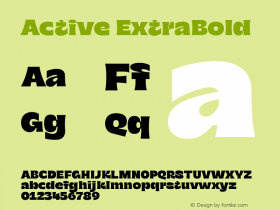
The Stuttgarter Zeitung announced that influential graphic designer Prof. Kurt Weidemann, born December 12, 1922, died yesterday in Sélestat in Alsace. Weidemann spoke several times at TYPO Berlin, where the portrait above was taken by Marc Eckardt in 2008.
As a corporate designer Weidemann revised or created the graphic identities of many well-known companies, such as co op, Zeiss, Merck AG, Mercedes-Benz AG, Daimer-Benz AG, Deutsche Aerospace AG and Deutsche Bahn AG. Furthermore he designed books for the Büchergilde Gutenberg as well as the publishing houses Ullstein, Propyläen, Ernst Klett and Thieme. His best-known typefaces are the Corporate A/S/E type system – consisting of a serif (A for Antiqua), a sans serif (S for Sans), and a slab serif (E for Egyptienne) – originally designed for Mercedes-Benz, and ITC Weidemann. In 1995 he was a recipient of the Raymond Loewy Foundation's Lucky Strike Designer Award, one of the most prestigious international design awards. The year after that he was awarded the Bundesverdienstkreuz I. Klasse (Order of Merit 1st Class).
At the age of 4 Kurt Weidemann moved from Masuren to Lübeck, where he spent his school and training days. In 1940 he went to the Eastern Front as a volunteer. He narrowly escaped death in the trenches, and ended up in Russian captivity by the end of the war. Late in his life he wrote about these years in his field diaries, published in 2002 under the title Kaum Ich (Hardly I) (private printing).
Actually Weidemann wanted to become a graphic designer "with an A in drawing". However he wasn't attracted much by university at first. He completed a typesetting apprenticeship in a workshop in Lübeck from 1950 to 1952, but subsequently studied Book Design and Typography for four semesters from 1953 to 1955 at the Staatlichen Akademie der bildenden Künste (State Academy of Art and Design) in Stuttgart, where his brother already resided. This is where, from 1955 on, Weidemann was active as a freelance graphic designer, advertising consultant, and copywriter. He was editor of the trade periodical for print and media Der Druckspiegel from 1955 to 1964. Together with Aaron Burns Weidemann founded the International Center for the Typographic Arts (ICTA) in New York City in the early 1960s, and served as its president from 1966 to 1972. In 1965 Weidemann was appointed professor to the self-chosen chair for Information and Graphic Practice at the Stuttgart academy, and taught there for twenty years.
At the beginning of the 1980s he took part in the founding of the WHU – Otto Beisheim School of Management in Vallendar, teaching there from 1983 on. From 1970 to 1972 he was president of the International Council of Graphic Design Associations (Icograda); and presided the Künstlerhaus Stuttgart for 7 years. Besides his teaching assignment at the WHU he started teaching at the Staatlichen Hochschule für Gestaltung in Zentrum für Kunst und Medientechnologie Karlsruhe from 1991 on.
Kurt Weidemann gaining strength during FontFight at TYPO Berlin "Image" in 2008.
Photo by Stephen Coles.
Weidemann was a disputatious designer. He disseminated his knowledge in numerous specialized books and countless presentations and talks. Legendary are his 10 Thesen zur Typografie, published in 1994 in the book Wo der Buchstabe das Wort führt. Ansichten über Schrift und Typografie. This resulted in his appeal: "God protect us from the vagrant creativity of the typomaniacs." Weidemann never could reconcile with the immense variety of different typefaces. During a discussion at Swiss Mediaforum in 2010 he literally said: "There are ten, maybe fifteen very good typefaces, which I can agree with at least. There are 30,000 on the market, of which 29,990 can be sunk in the Pacific Ocean without causing any cultural damage."
Weidemann had little clemency with himself, nor others, who practised or taught what he considered to be bad communication. He was also merciless when it came to his own body. Not too long ago he said the following during an interview: "My body has to obey me, and it does, because it does not have any say in it." His body was then 87. It finally refused to obey on Wednesday, March 30th, in Sélestat in Alsace.
Header image:Kurt Weidemann at TYPO Berlin "Image", 2008. Photo by Marc Eckardt









